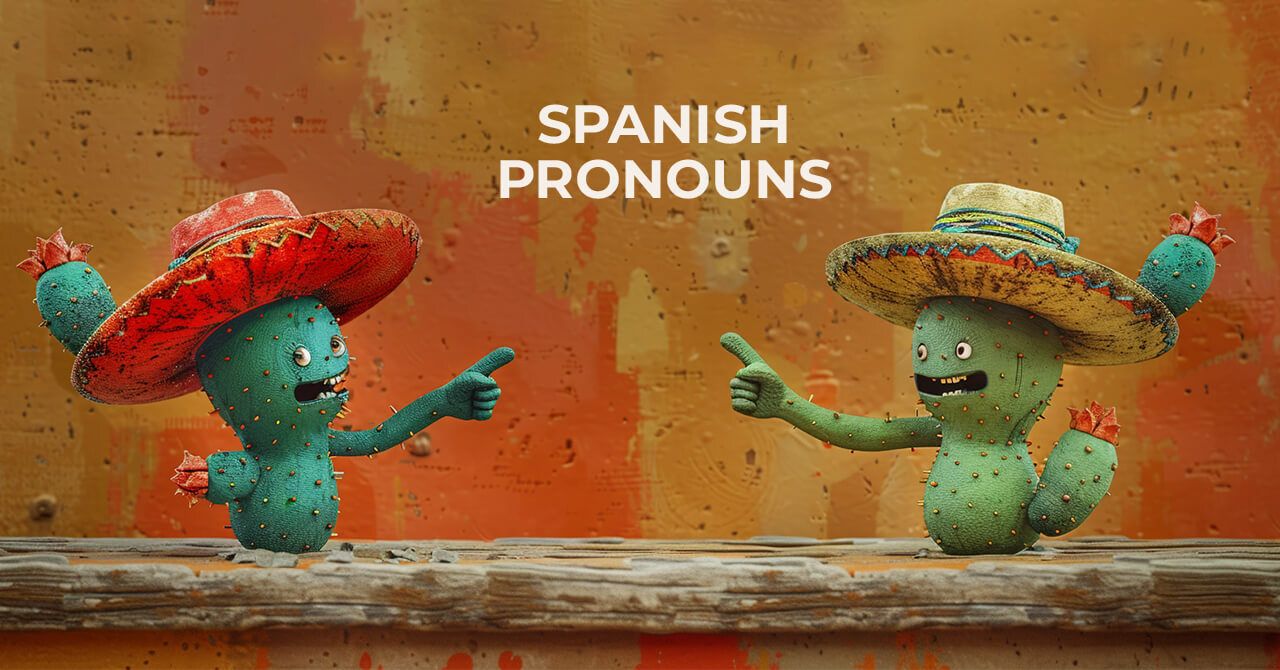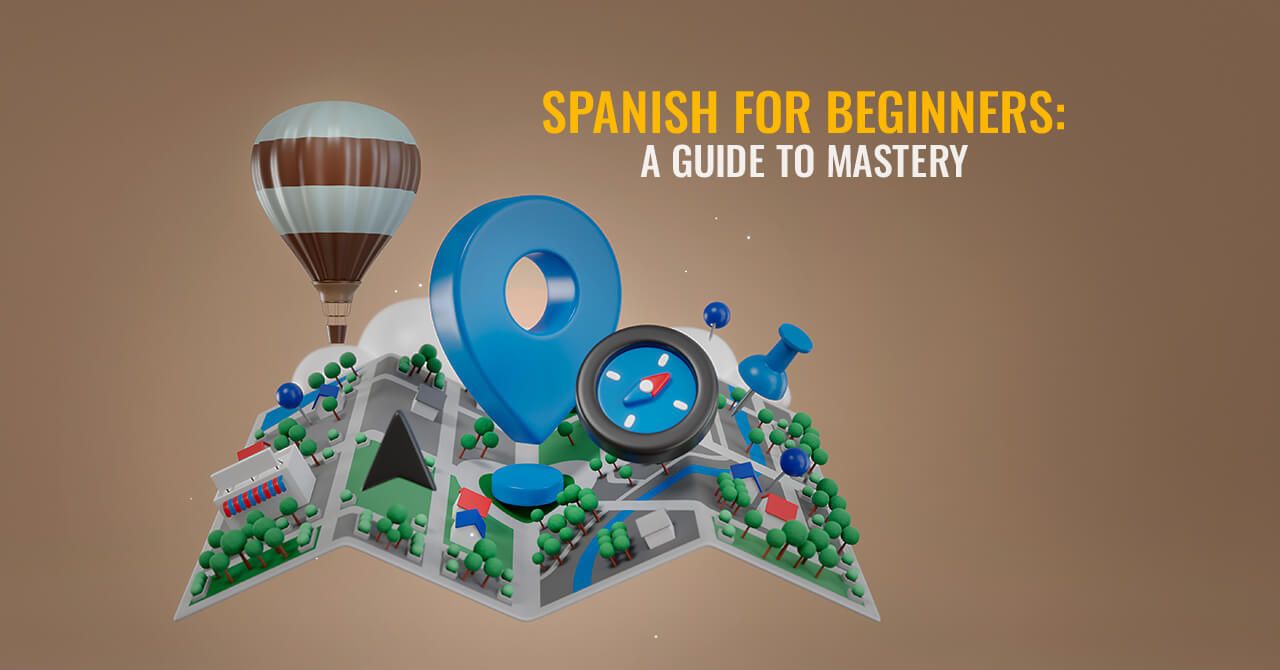
Spanish Pronouns: Rules, Notes, And Examples
Pronouns in Spanish have a more complicated structure than in English. Using them in the wrong context can lead to cultural misunderstanding.
As in English and other languages, pronouns are required to mention an object, person, or situation in a sentence. This helps us spatially and temporally organize what we are saying (or referring to). However, pronouns in Spanish, like those in many Romance languages, have additional rules, such as gender.
Let’s research how to say pronouns in Spanish and what they mean.
What are the pronouns in Spanish?
The term “pronoun” literally means “in place of the noun.” It is a part of speech that we use as an element that replaces them. They are useful to avoid repetition in the sentence.
In addition to this more traditional explanation. It helps us understand and structure the conversation and make sure the subject and verb match correctly.
Types of Spanish pronouns
The Spanish language has many pronouns, like French, Italian, or Portuguese. Here are some of them.
Pronouns in Spanish have a more complicated structure than in English. Using them in the wrong context can lead to cultural misunderstanding. Regardless of the pronoun types or level of complexity, you can find help from Spanish tutors on LiveXP. In private lessons, you can learn about any topic and practice using pronouns in real-life situations, considering the context and culture.
Personal pronouns
These are the most common pronouns. They are usually used as a subject (or simply as a noun). They are used to identify things, people, situations, or animals. They are organized as follows:
Singulars
- Yo (I) (1st person).
- Tú / Vos (You) (2nd person).
- Él / Ella (He / She) (3rd person).
Plurals
- Nosotros (We) (1st person).
- Ustedes / Vosotros (You) (2nd person).
- Ellos / Ellas (They) (3rd person).
Note:
Examples:
Tú comes la comida.
You eat the food.
Nosotros viajamos por todo el mundo.
We travel around the world.
Ellos cabalgan en su rancho.
They ride on their ranch.
Ustedes no son dueños de nada.
You don’t own anything.
Vosotros vais a jugar fútbol la semana que viene.
You are going to play football next week.
Demonstrative pronouns
They fulfill a function similar to the personal pronouns, grammatically speaking, with the particularity that their main function is to determine the spatiality and location of the object. They would be the following:
Singulars
- Éste, ése, aquél (This, that) (masculine).
- Ésta, ésa, aquélla (This, that) (feminine).
- Esto, eso, aquello (This, that) (neuter).
Plurals
- Éstos, ésos, aquéllos (These, those) (masculine).
- Éstas, ésas, aquéllas (These, those) (feminine).
Note:
Examples:
Ésta no es la que quiero.
This is not the one I want.
Aquéllos son los mejores.
Those are the best.
Éstas son las reglas y las tienen que aceptar.
These are the rules, and you have to accept them.
Possessive pronouns
Their function is to indicate belonging. They are pronouns that replace both a possessive adjective and a noun. They are the following:
Singulars
- Mío/a, míos/as (mine) (masculine and feminine)
- Tuyo/a, tuyos/as (yours) (masculine and feminine)
- Suyo/a, suyos/as (his / hers) (masculine and feminine)
Plurals
- Nuestro/a, nuestros/as (ours) (masculine and feminine)
- Vuestro/as, vuestros/as (yours) (masculine and feminine)
- Suyo/a, suyos/as, suyos/as (theirs) (masculine and feminine)
Note:
Examples:
Estos zapatos son suyos.
These shoes are yours.
Vuestro vuelo sale en tan solo algunos minutos.
Your flight leaves in just a few minutes.
Este camisón creo que es tuyo.
This nightgown, I think, is yours.
¿Y usted no ve que esto es suyo?
And don’t you see that this is yours?
Relative pronouns
Relative pronouns are pronouns that function to introduce a subordinate clause. They can have the function of the subject or object of the sentence. They are:
With number
- Cual/cuales (Which) (masculine and feminine).
- Cuanto/cuanta/cuantos/cuantas (How much) (masculine and feminine).
- Quien/quienes (Who/whom) (masculine and feminine).
- Cuyo/cuya/cuyos/cuyas (Whose) (masculine and feminine).
Without number
- Que (What/That).
- Donde (Where).
- Como (As).
Note:
Example:
Esa es la mentira que te pedí que dijeras.
That’s the lie that I asked you to say.
Aquí está el lugar donde ocurrieron los hechos.
Here is the place where the events occurred.
Tienes que resolver la ecuación como tu amigo Ricardo.
You have to solve the equation as your friend Ricardo did.
Interrogative/Exclamative Pronouns
These are pronouns that are used exclusively to state or ask a question. They are easily recognizable because they are usually accompanied by an exclamation mark and always have a tilde. They are:
With number
- Cuál/cuáles (Which) (masculine and feminine).
- Cuánto/cuánta/cuántos/cuántas (How many) (masculine and feminine).
- Quién/quiénes (Who) (masculine and feminine).
Without number
- Qué (What).
- Dónde (Where).
- Cómo (How).
Note:
Examples:
¿Qué era lo que me querías decir?
What was it you wanted to tell me?
¿Cómo vas a explicar eso?
How are you going to explain that?
¿Cuáles son tus opciones favoritas?
What are your favorite options?
¡Qué barbaridad! ¡No lo puedo creer!
What an outrage! I can’t believe it!
¿¡Quiénes se creen que son!?
Who do they think they are?!
Reflexive pronouns
They are called that way because they are self-reflexive. That is, the actions of the verb have a self-referential effect on itself. They are usually verbs that go next to the verb.
Singulars
- Me (Me) (1st person).
- Te (You) (2nd person).
- Se (Him / Her) (3rd person).
Plurals
- Nos (Us) (1st person).
- Os (You) (2nd person).
- Se (Their) (3rd person).
Note:
Examples:
Me dicen las cosas, pero siempre las olvido.
They tell me things, but I always forget them.
Ellos se centran en sus labores y se olvidan de nosotros.
They focus on their chores and forget about us.
Yo no sé si va a sentarse o no.
I don’t know if he’s going to sit down or not.
A nosotros nos gustan los vegetales.
We like vegetables.
Indefinite pronouns
There is also a large group of indefinite pronouns, meaning that their reference may be vague or unknown to the speaker. These are some of the best-known. These are:
With number
- Un/ una/unos/unas (A / An) (masculine and feminine).
- Algún/alguna/algunos/algunas (Some) (masculine and feminine).
- Ningún (No / None) (masculine and feminine).
- Otro/otra/otra/otros/otras (Other) (masculine and feminine).
- Tanto/tanta/tantos/tantas (Many) (masculine and feminine).
Without number
- Mucho (A lot).
- Demasiado (Too much).
- Escaso (Too little).
- Todo (All).
Note:
Examples:
Unas ratas están caminando por las alcantarillas.
Some rats are walking through the sewers.
Algún tipo nos va a saludar.
Some guy is going to say hello to us.
Nosotros disfrutamos mucho de la carne.
We really enjoy the meat.
Creo que ha sido demasiado, por favor, basta.
I think it’s been too much, please stop.
How to learn all Spanish pronouns
If you are trying to learn Spanish pronouns, LiveXP will help you. It is a 1 to 1 language learning platform with specialized tutors who adapt each lesson to your preference. With a professional teacher, you can learn any subject easier and faster than on your own. Male or female Spanish pronouns will be mastered in the blink of an eye on LiveXP.
The Word Trainer feature is designed to help you memorize new words, either Spanish pronouns or phrases or other vocabulary, using a spaced repetition method. The best part of this feature is that you can use it anywhere and anytime on your smartphone to practice using pronouns or new words.
I'm from Argentina and I'm bilingual. I speak both English and Spanish as native languages. I'm a content writer with extensive experience.

